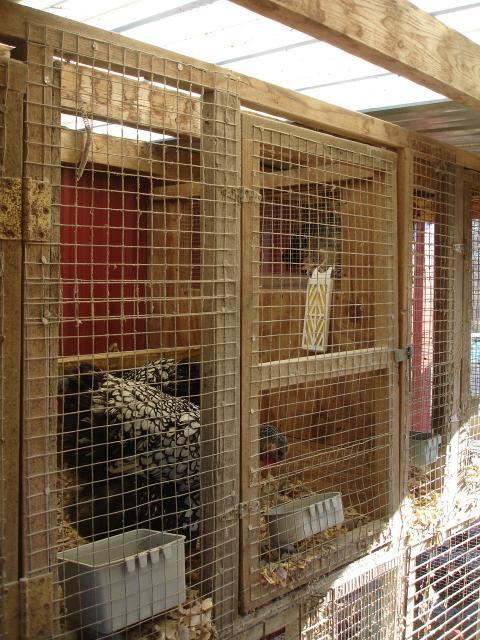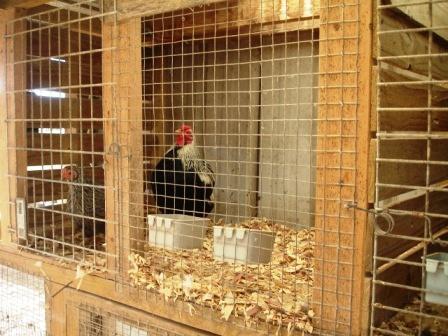- Thread starter
- #11
Looks like we got some great advice on force molting our birds for a show. I hope this helps the person that sent me a message on the subject. I had no idea only what I can remember from a kid visting this guys house what he did.
I only hatch my bantams in March and stop in Mid April to keep thier size down. I let my adult birds molt when they want to and then after I put them through a conditioning program to get the feathers the way I want then I select them for breeders for the next year.
Here is a question for you to help the people who want to take thier chickens to a poultry show and want to know the basics of what they need to do say two months befor the show. Just for conversation sake the next show is two months away and they have lets say five fantastic light brown leghorn pullets and five males in two seperate 8x8 pens. They have been giving fresh water ever day by leting a water faucet drip into a one gallon plastic container in thier pen so the water is always fresh and cool. The breeder has given them a game bird feed called FRM Game Bird Pellets which has a 20% protein and its so green in color you can see the alfafla leaves in the feed. They have been raised on eight inches of fresh pine shavings and roosted every night on a 2x2 rounded pole about two feet off the ground. The new person has built five 4x4 conditioning pens in his barn and has five 4x5 pens to put his males in when the time is right.
This person is ready to take these ten great birds out of the big pens but what do they do next for the show in two months.
Any advice you can give them for training, feeding, water ect ect.
We also got to help them design some wooden shiping crates so we got to come up with some plans for that to.
Money is no object. They work for the Goverment and make lots of money and have connectons with the white house and drive a hummer?
What can we do to help them with these pretty rare Heritage Light Brown Leghorns that I found for them early this year. bob
I only hatch my bantams in March and stop in Mid April to keep thier size down. I let my adult birds molt when they want to and then after I put them through a conditioning program to get the feathers the way I want then I select them for breeders for the next year.
Here is a question for you to help the people who want to take thier chickens to a poultry show and want to know the basics of what they need to do say two months befor the show. Just for conversation sake the next show is two months away and they have lets say five fantastic light brown leghorn pullets and five males in two seperate 8x8 pens. They have been giving fresh water ever day by leting a water faucet drip into a one gallon plastic container in thier pen so the water is always fresh and cool. The breeder has given them a game bird feed called FRM Game Bird Pellets which has a 20% protein and its so green in color you can see the alfafla leaves in the feed. They have been raised on eight inches of fresh pine shavings and roosted every night on a 2x2 rounded pole about two feet off the ground. The new person has built five 4x4 conditioning pens in his barn and has five 4x5 pens to put his males in when the time is right.
This person is ready to take these ten great birds out of the big pens but what do they do next for the show in two months.
Any advice you can give them for training, feeding, water ect ect.
We also got to help them design some wooden shiping crates so we got to come up with some plans for that to.
Money is no object. They work for the Goverment and make lots of money and have connectons with the white house and drive a hummer?
What can we do to help them with these pretty rare Heritage Light Brown Leghorns that I found for them early this year. bob







